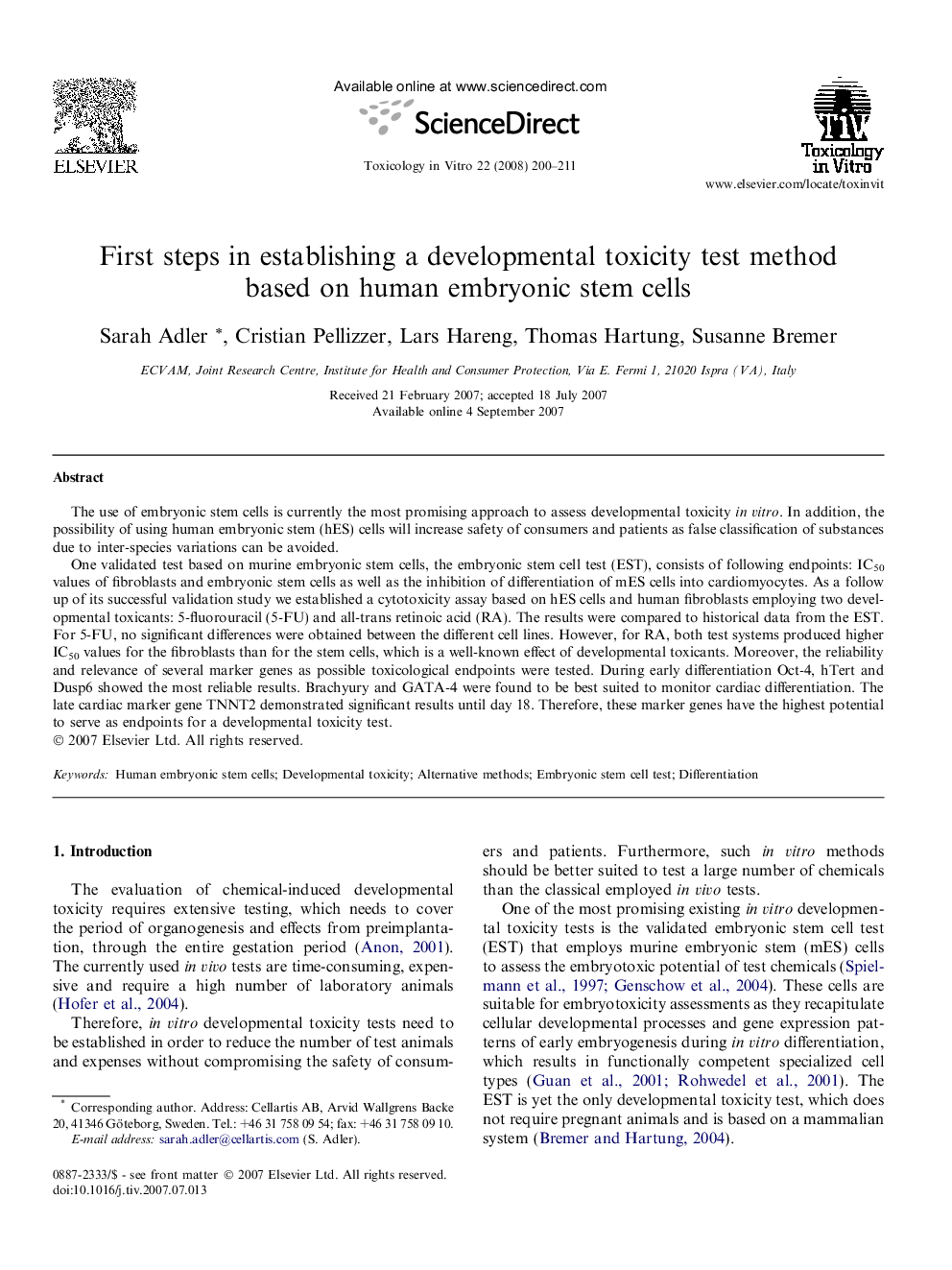| Article ID | Journal | Published Year | Pages | File Type |
|---|---|---|---|---|
| 2603633 | Toxicology in Vitro | 2008 | 12 Pages |
The use of embryonic stem cells is currently the most promising approach to assess developmental toxicity in vitro. In addition, the possibility of using human embryonic stem (hES) cells will increase safety of consumers and patients as false classification of substances due to inter-species variations can be avoided.One validated test based on murine embryonic stem cells, the embryonic stem cell test (EST), consists of following endpoints: IC50 values of fibroblasts and embryonic stem cells as well as the inhibition of differentiation of mES cells into cardiomyocytes. As a follow up of its successful validation study we established a cytotoxicity assay based on hES cells and human fibroblasts employing two developmental toxicants: 5-fluorouracil (5-FU) and all-trans retinoic acid (RA). The results were compared to historical data from the EST. For 5-FU, no significant differences were obtained between the different cell lines. However, for RA, both test systems produced higher IC50 values for the fibroblasts than for the stem cells, which is a well-known effect of developmental toxicants. Moreover, the reliability and relevance of several marker genes as possible toxicological endpoints were tested. During early differentiation Oct-4, hTert and Dusp6 showed the most reliable results. Brachyury and GATA-4 were found to be best suited to monitor cardiac differentiation. The late cardiac marker gene TNNT2 demonstrated significant results until day 18. Therefore, these marker genes have the highest potential to serve as endpoints for a developmental toxicity test.
